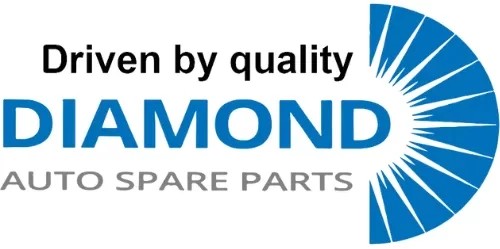Electric vehicles (EVs) have evolved from a niche product to a dominant force in the automotive market, driven by advancements in technology, increasing environmental awareness, and supportive government policies. With projections indicating that EVs could constitute over 50% of new car sales by 2030, their rise is not just transforming the automotive landscape but also disrupting auxiliary industries, including the aftermarket spare parts market.
The aftermarket industry traditionally thrives on the sale of components like engines, transmissions, exhausts, filters, and oil-based products. However, as EVs gain traction with their simpler mechanical systems and fewer moving parts, the aftermarket sector faces new challenges and opportunities. This blog explores how the rise of electric vehicles will shape the future of the spare parts industry and examines strategies aftermarket businesses can adopt to stay competitive in the shifting landscape.
1. How EVs Differ Mechanically from Internal Combustion Engines (ICEs)
The traditional internal combustion engine (ICE) vehicle relies on complex mechanical systems to power movement. These include:
- Engines with hundreds of moving parts (pistons, valves, etc.).
- Transmission systems for gear shifting.
- Exhaust systems that deal with emissions.
- Cooling systems to manage heat from engine combustion.
- Lubrication systems requiring oil and filters.
In contrast, electric vehicles use:
- Electric motors that have fewer moving components.
- Battery packs instead of fuel tanks.
- Regenerative braking systems that reduce brake wear.
- Inverters and controllers for power management.
EVs eliminate many of the components central to ICE vehicles, such as oil filters, spark plugs, and exhaust pipes, meaning that several spare parts traditionally stocked by the aftermarket will no longer be in demand. This significant difference in vehicle construction will alter the structure of the aftermarket industry, reducing the demand for certain parts while creating opportunities for new ones.
2. Impact of EVs on Demand for Traditional Spare Parts
With fewer mechanical systems to maintain, the transition to EVs will reduce the demand for several categories of spare parts, including:
- Engine components (gaskets, pistons, crankshafts, etc.).
- Transmission and clutch parts (synchros, clutch plates, gears).
- Exhaust systems (mufflers, catalytic converters).
- Filters (oil, air, and fuel filters).
- Lubricants and coolants used in ICEs.
Additionally, the regenerative braking system in EVs reduces wear on brake pads, further diminishing the need for one of the most commonly replaced components in ICE vehicles. As a result, traditional aftermarket businesses could see a steep decline in sales of these parts over the coming decades.
However, some components like tires, wipers, and lighting systems will remain relevant since they are common to both ICE and electric vehicles. Tire sales may even increase slightly, as EVs tend to be heavier due to the battery packs, resulting in faster tire wear.
The shift towards EVs introduces a new set of requirements for aftermarket businesses. Battery replacements, electric motor repairs, and electronic control unit (ECU) maintenance will take center stage. Businesses must realign their inventories to accommodate the growing demand for such components.
3. Emerging Opportunities in the EV Aftermarket Sector
While some traditional parts may become obsolete, the rise of electric vehicles opens new avenues for growth in the aftermarket industry. Here are several key opportunities:
1. Battery Management and Recycling
- EV batteries have a limited lifespan, typically ranging from 8 to 15 years. Replacement of worn-out batteries will become a significant part of the aftermarket business.
- Recycling spent batteries and recovering materials such as lithium, cobalt, and nickel will be critical, both for environmental reasons and to address material shortages.
- Businesses that offer battery health diagnostics, refurbishment, and recycling services will have a competitive edge.
2. Charging Infrastructure and Components
- As EV adoption grows, aftermarket businesses can expand into offering home chargers, public charging stations, and related components.
- Providing installation, maintenance, and repair services for charging stations will also create opportunities for service-based aftermarket players.
3. Electric Motors and Power Electronics
- Although electric motors are simpler than ICE engines, they still require specialized knowledge to maintain or repair.
- Aftermarket businesses can focus on repairing or refurbishing electric motors, inverters, and ECUs to cater to EV owners looking for alternatives to costly dealership services.
4. Software and Diagnostic Tools
- Many EV issues relate to software malfunctions rather than hardware failures. Therefore, software updates and diagnostic tools will play a critical role in the EV aftermarket.
- Developing and offering proprietary diagnostic systems for different EV models could become a lucrative business for independent repair shops and parts retailers.
5. Regenerative Braking System Components
- While regenerative braking reduces the wear on brake pads, new types of brake components such as electric braking modules will need regular maintenance and repair.
6. Over-the-Air (OTA) Updates and Remote Services
- EV manufacturers frequently release software updates to optimize performance. Aftermarket players can offer services to manage these updates and provide remote diagnostics, enhancing customer convenience.
These emerging trends indicate that businesses in the aftermarket industry can remain relevant and profitable by adapting to the changing landscape and capitalizing on new revenue streams.
4. Challenges for the Aftermarket Industry in an EV-Dominated Market
While the EV revolution presents numerous opportunities, it also introduces several challenges for the aftermarket industry:
1. Shift in Skill Requirements
- Traditional mechanics will need to retrain to handle high-voltage systems, electric motors, and battery diagnostics.
- Businesses will need to invest in specialised tools, equipment, and training programs to upskill their workforce.
2. Increased Competition from OEMs
- Original Equipment Manufacturers (OEMs) tend to retain control over battery replacements, motor repairs, and software updates, limiting the scope for independent aftermarket players.
- Some EV manufacturers restrict access to proprietary diagnostic tools, creating barriers for third-party service providers.
3. Extended Product Lifecycles
- EVs require less frequent maintenance, reducing the demand for spare parts and services.
- With fewer breakdowns and longer intervals between repairs, aftermarket businesses may see a decline in customer footfall over time.
4. Data Access and Ownership Issues
- Many EV components rely on software, making access to data essential for repairs and diagnostics. OEMs often restrict access to this data, making it challenging for aftermarket businesses to service EVs effectively.
Despite these challenges, proactive businesses can overcome obstacles by investing in partnerships with OEMs, focusing on specialized services, and adopting new business models that align with the changing landscape.
5. Strategies for Aftermarket Businesses to Adapt
To remain competitive in the EV era, aftermarket businesses need to adopt forward-thinking strategies. Here are some recommendations:
1. Diversify Product Offerings
- Shift focus from traditional ICE components to batteries, electric motors, charging equipment, and software solutions.
- Collaborate with OEMs or suppliers specializing in EV components to ensure access to high-quality products.
2. Invest in Training and Certification
- Offer regular training programs for employees to upskill them in EV technology.
- Seek certification from recognized institutions to build customer trust and ensure compliance with safety standards.
3. Build Digital Capabilities
- Develop proprietary diagnostic software and tools to service different EV brands.
- Use data analytics to track customer needs, predict service requirements, and offer personalized solutions.
4. Offer Subscription-Based Services
- Introduce subscription models for routine maintenance, diagnostics, and software updates to generate recurring revenue.
- Provide remote assistance and over-the-air updates to offer added convenience to customers.
5. Expand into EV Fleet Management
- Fleet operators adopting EVs will require comprehensive maintenance services. Aftermarket businesses can tap into this market by offering tailored solutions for fleets.
By adopting these strategies, aftermarket businesses can position themselves as key players in the evolving automotive ecosystem.
6. Conclusion: The Road Ahead
The rapid shift towards electric vehicles will undoubtedly reshape the aftermarket spare parts industry, phasing out some components while creating new opportunities for growth. The reduced complexity of EVs, coupled with extended product lifecycles, poses challenges for traditional aftermarket players. However, the emergence of battery services, software-based diagnostics, and charging infrastructure offers exciting avenues for diversification.
Aftermarket businesses that proactively invest in new technologies, upskill their workforce, and align with the evolving needs of EV owners will thrive in the changing landscape. Collaboration with OEMs, expansion into fleet management services, and the development of proprietary tools and software will also be key to success.
Ultimately, the future of the aftermarket spare parts industry will be shaped by its ability to innovate and adapt to the new realities of electric mobility. By embracing change and focusing on emerging opportunities, the industry can secure its place in the automotive ecosystem of the future.


